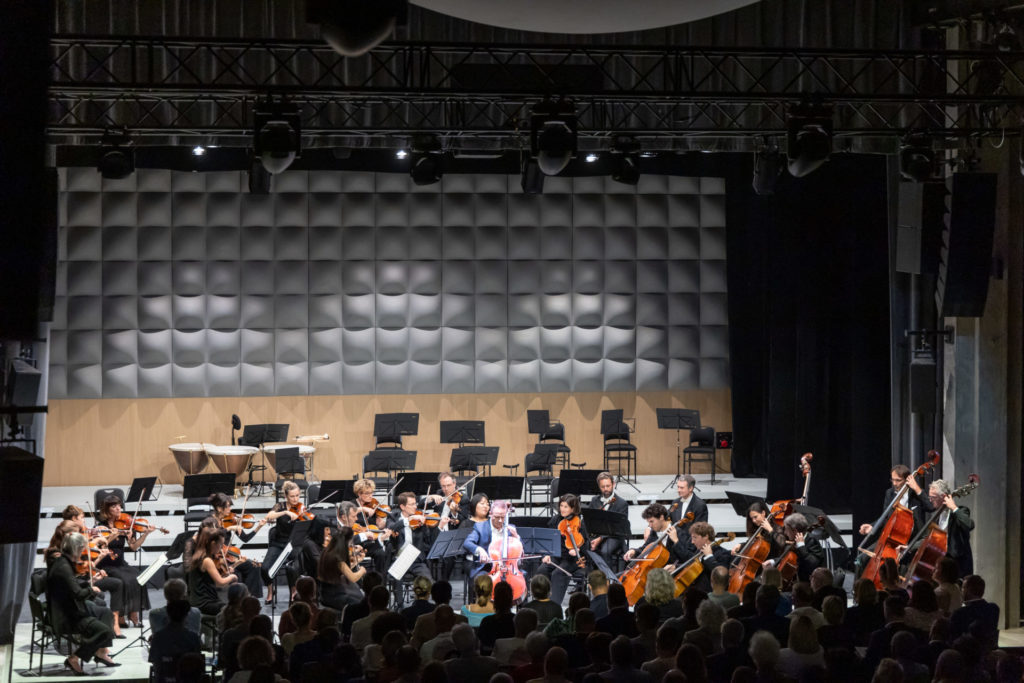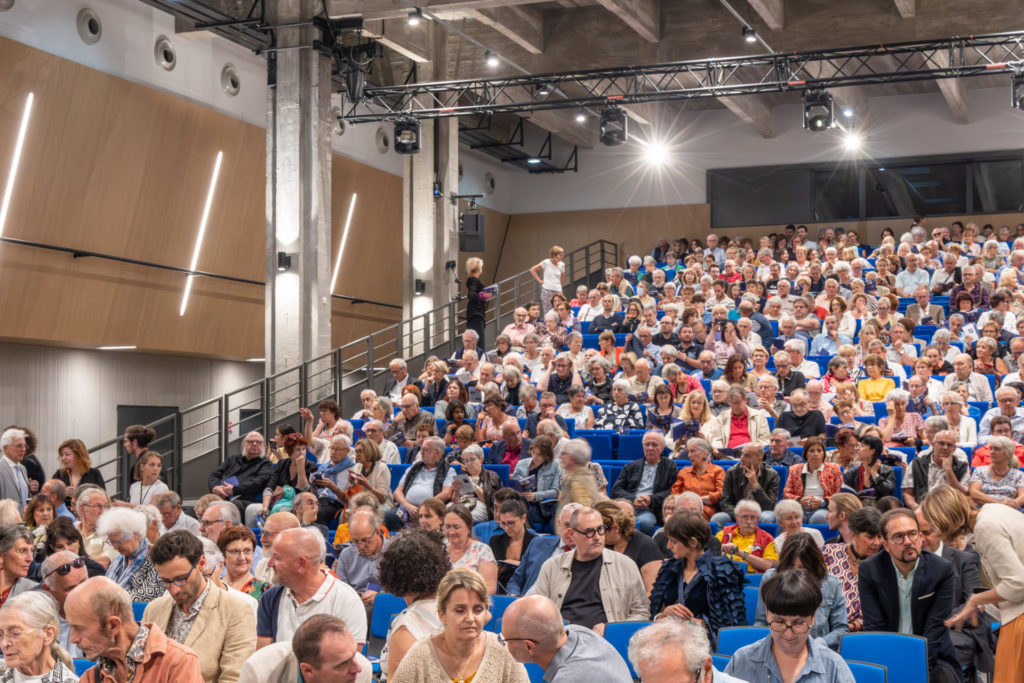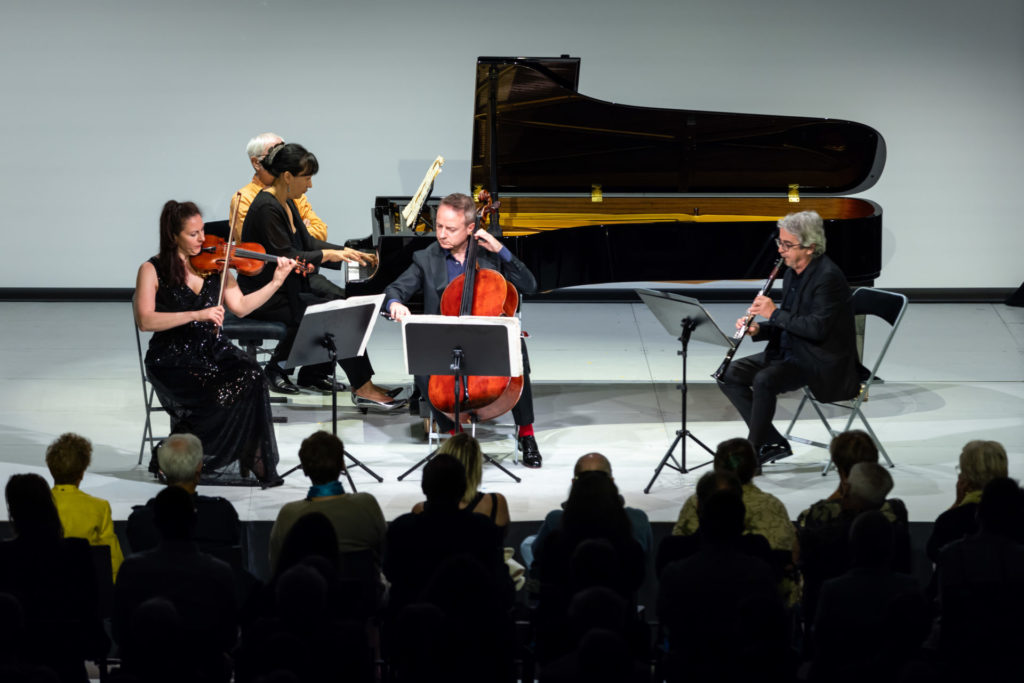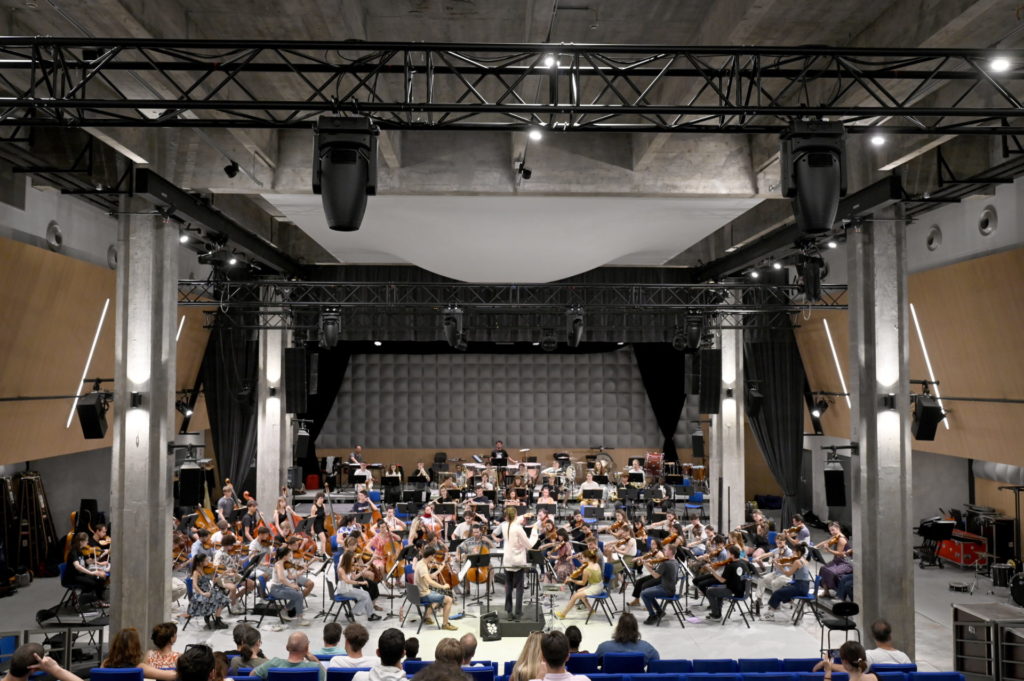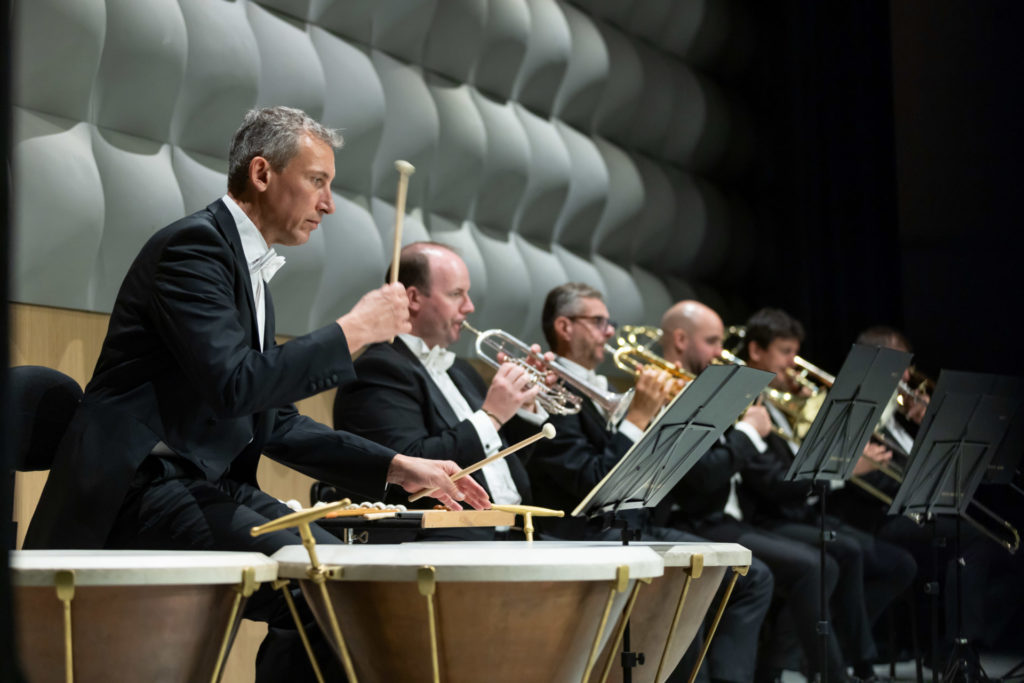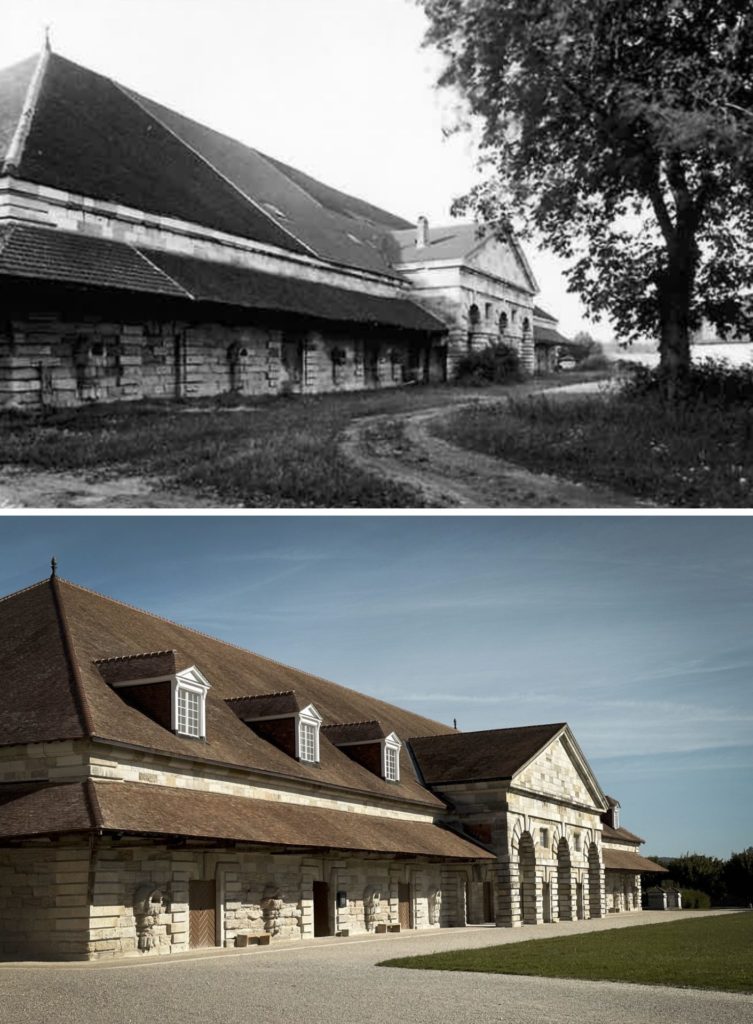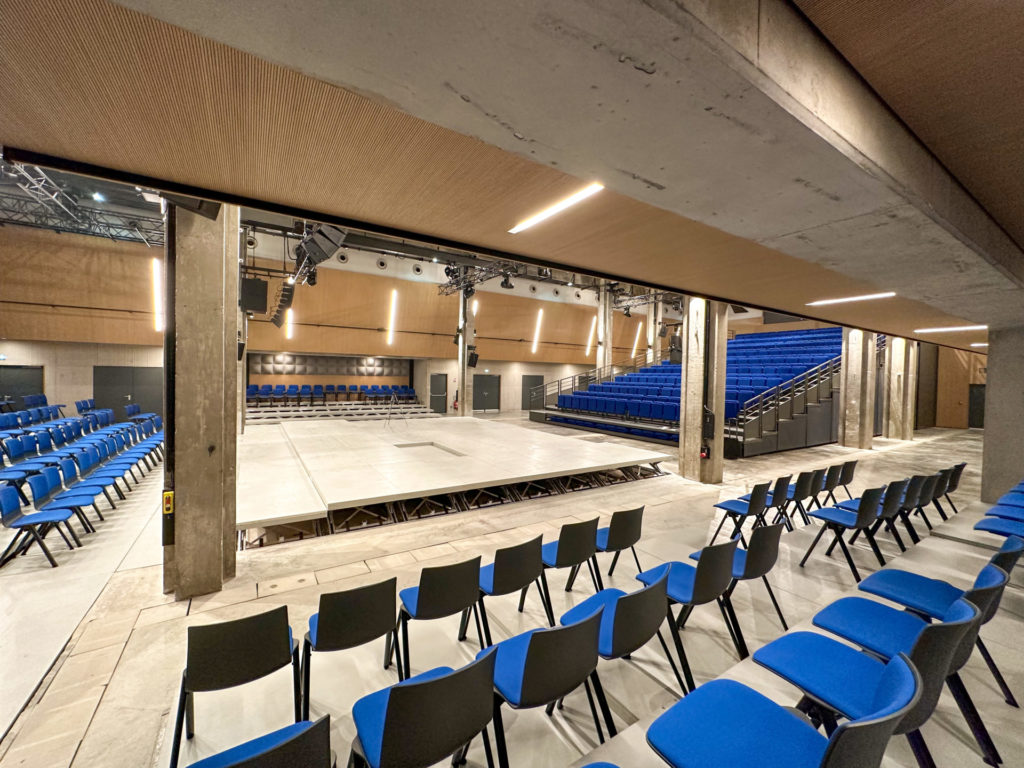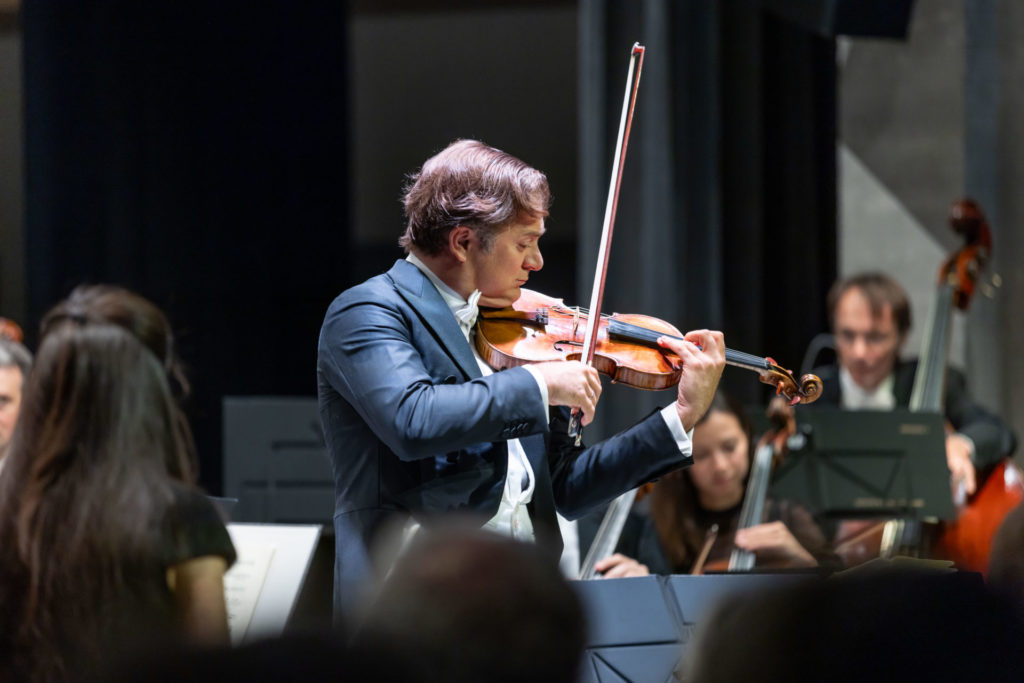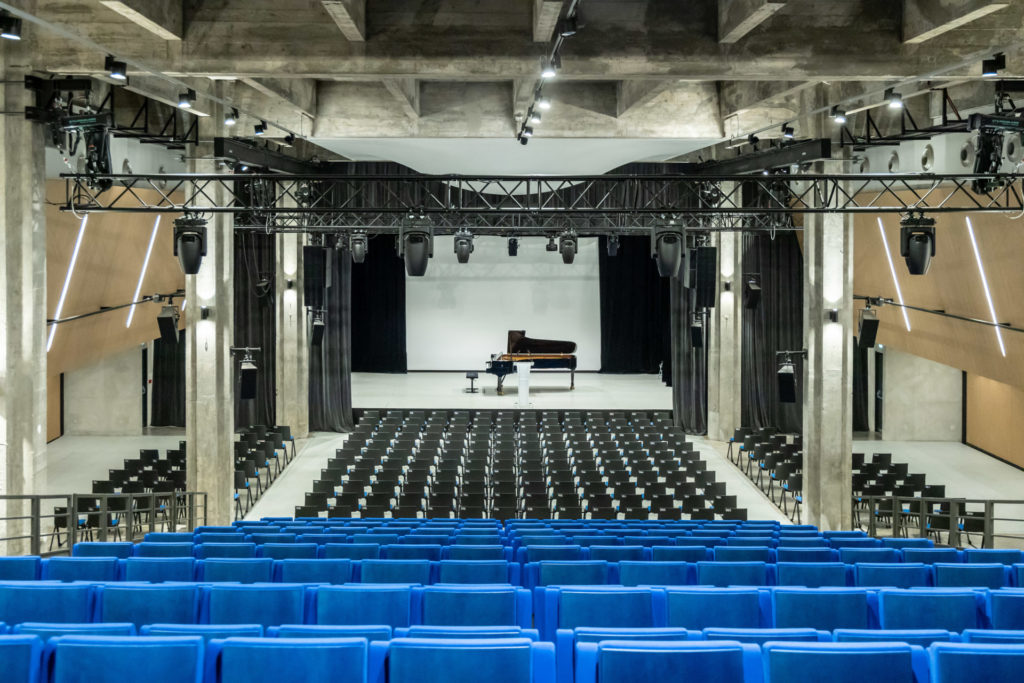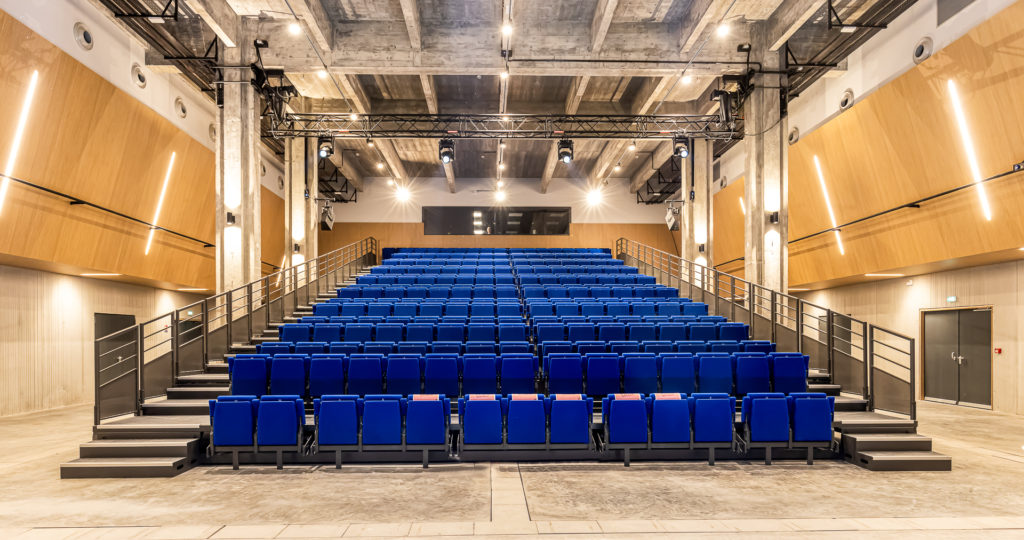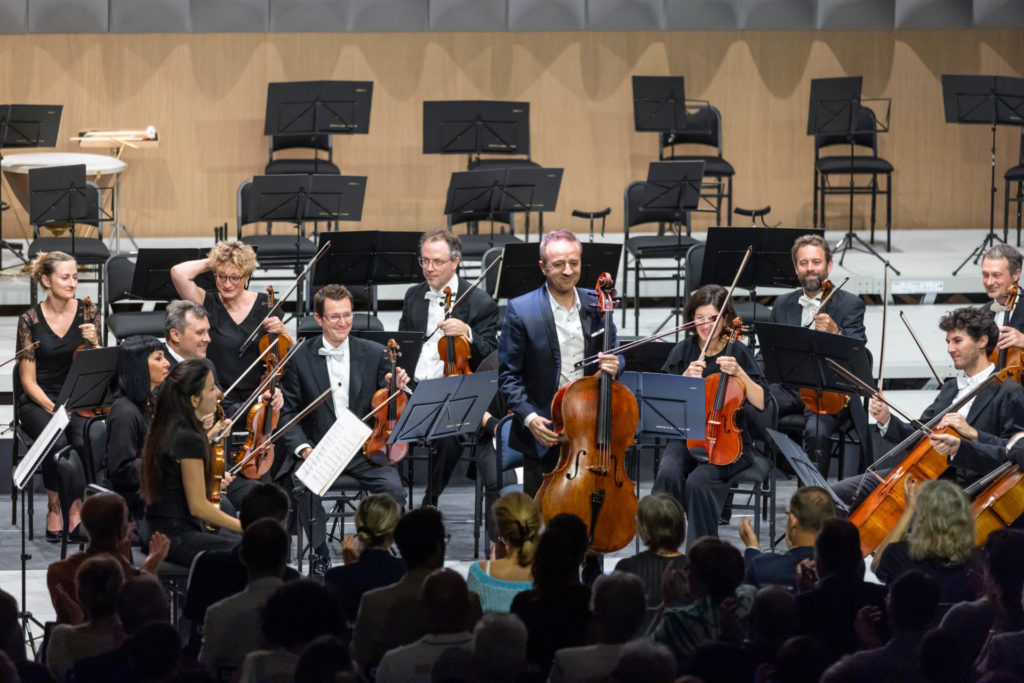Un nouvel espace culturel au cœur de la Berne Est
The Saline royale, a former saltworks, listed as a UNESCO World Heritage Site since 1982, has built a new cultural space: the Claude-Nicolas Ledoux hall, named after the architect of the Saline royale, was inaugurated in September 2023. It puts on a rich musical programme. Artists from multiple horizons, soloists, chamber and symphonic orchestras perform here.
This historic building, called a “Berne”, meaning “pan house” was a key element in the production of salt from 1778 to 1895. Abandoned, destroyed and then rebuilt from 1930 to 1937 to accommodate horses from the Besançon stud farm (which never came), the Berne remains a testament to an industrial past and a successful restoration using reinforced concrete for the first time.
With an area of 1,000 sq. m, this performance and congress hall can accommodate 570 people seated and 1,500 standing. This new facility, which helps develop the activity of the Saline royale of Arc-et- Senans and contributes to the appeal of the area, was supported by the Département of Doubs.
As a living UNESCO site in tune with the times, the Saline royale nurtures this idea of transmission by pursing its development, and enriches its cultural offer with the completion of this major project.


 Getting to the Saline royale
Getting to the Saline royale Heritage
Heritage Exhibitions
Exhibitions Gardens
Gardens Calendar
Calendar Gift shop / Bookshop
Gift shop / Bookshop Hotel & restaurant
Hotel & restaurant Seminars & private events
Seminars & private events
